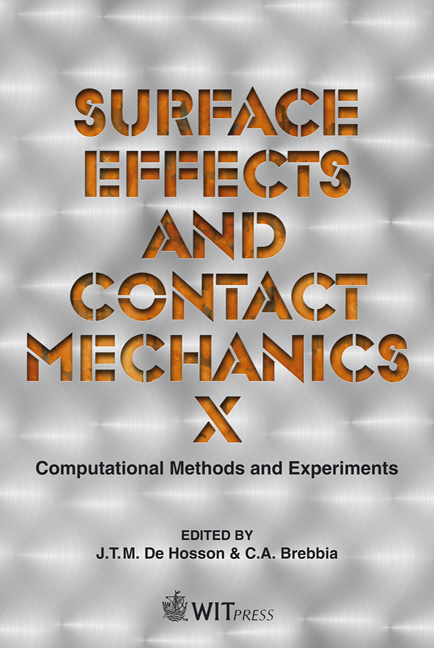Evolution Of Microstructure And Properties In Laser Cladding Of A Ni-Cr-B-Si Hardfacing Alloy
Price
Free (open access)
Transaction
Volume
71
Pages
10
Page Range
287 - 296
Published
2011
Size
5,070 kb
Paper DOI
10.2495/SECM110251
Copyright
WIT Press
Author(s)
I. Hemmati, V. Ocelík & J. Th. M. De Hosson
Abstract
Ni-Cr-B-Si coatings are used in many industrial applications in order to improve wear and/or corrosion properties. These coatings have traditionally been deposited by thermal spray techniques but the laser cladding process is also being increasingly employed to produce Ni-Cr-B-Si coatings with superior functional properties. In this research, the microstructural evolutions and the phase formations in the laser cladding of a Ni-Cr-B-Si alloy and their effects on the hardness of the clad layer are discussed. Results of this study show various types of boride and carbide phases can form in each track of the clad layer. These changes demonstrate the potential for tuning the properties of these coating by controlling the processing conditions. Keywords: Ni-Cr-B-Si, laser cladding, microstructural evolution. 1 Introduction Significant development of high power lasers has encouraged the commercial application of laser-assisted surface modification technologies. Laser cladding is one of these technologies in which an alloy powder of a desired composition and a thin layer of a substrate material are melted under laser irradiation and then rapidly solidified to form a dense coating with minimum dilution and metallurgical bond to the base material The rapid solidification associated with laser cladding is able to generate novel microstructures with extended solubilities, metastable phases and refined features [1–3]. The Ni-Cr-B-Si alloys are boride-containing Nickel base hardfacing alloys with excellent wear and corrosion resistance in chemically-aggressive environments and high temperature working conditions [4–6]. These alloys have traditionally been
Keywords
Ni-Cr-B-Si, laser cladding, microstructural evolution





